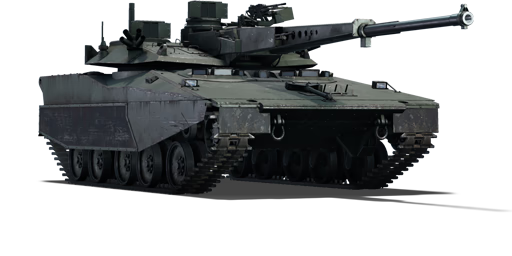The High Survivability Test Vehicle – Lightweight (HSTV-L) is a light gun system testbed developed in the late 1970s as part of the larger joint U.S. Army and U.S. Marine Corps – Advanced Anti-Armour Vehicle Evaluation (ARMVAL) program, which aimed to explore concepts for future armoured fighting vehicles with a focus on lightweight vehicles. The HSTV-L was created to operationally test the concept of using high speed to enhance a vehicle's survivability rather than heavy armour. It was also used to test a number of new tank technologies, the most notable of which was an automatic main gun - a 75 mm ARES XM274 smoothbore rapid-fire hyper-velocity tank gun. The whole system was nicknamed ELKE (Elevated Kinetic Energy Vehicle). The ARES concept was to fire several high-velocity armour-piercing rounds at an enemy main battle tank (MBT) in a short period of time in order to break through its composite armour. Only one HSTV-L testbed was built and tested until the mid-1980s. Unfortunately, by the time the HSTV-L was tested, the U.S. Army had determined that the ARES cannon would be ineffective against newer Soviet tanks and decided that the 105 mm Royal Ordnance L7 tank gun was the minimum calibre for light gun systems. The Marines were also not confident that the ARES would be effective, particularly in their beach-landing role in breaking through enemies' heavy defences.
Introduced in Update "Starfighters", the HSTV-L offers a unique gameplay experience in top-tier U.S. Army ground forces. The HSTV-L, which has a two-plane fully automatic stabilisation system, laser rangefinder, thermal imaging equipment, and an autoloader that can reload in as little as 1.5 seconds, holds a lot of potential as a hard-hitting flanking vehicle on a heavily contested battlefield. Because of the unusual main gun arrangement, the HSTV-L also provides excellent gun depression if the battlefield is mountainous. However, due to the small calibre of its main gun, it may struggle to engage some MBTs frontally, limiting its overall versatility.















